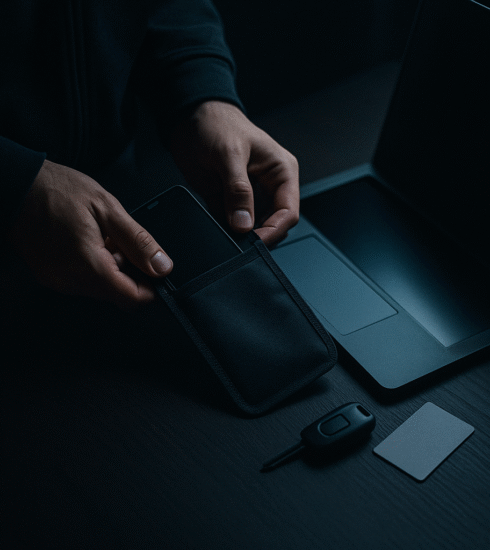Security While Living Alone: Access, Visitors, Verification
Living alone offers independence but also presents unique security challenges that require a deliberate and layered approach. You are the sole person responsible for your safety, making awareness and proactive planning your most critical assets. This environment demands strategies for controlling access, managing visitors, and verifying the identity of anyone seeking entry. The goal is to create a secure sanctuary without building a fortress, balancing peace of mind with practical daily living. Your tactics must be sustainable and integrated into your routine to be effective. We will focus on lawful, practical measures that enhance your personal security posture when you are the only line of defense.
Your primary vulnerability is the single point of failure. There is no one else inside to call for help or verify a threat. The rule is to create external checks and internal redundancies. Your security must work even when you are not there to manage it.
Reinforcing the Single Point of Entry
The front door is your most critical defensive position and deserves the highest level of attention. A sturdy door frame is just as important as a strong door itself, as a weak frame will splinter under force. Replace short screws in the strike plate with long three inch screws that anchor deeply into the wall stud. This simple upgrade significantly reinforces the door against a kick in attempt, buying you precious seconds and creating a louder, more noticeable failure point.
Consider upgrading to a Grade 1 or Grade 2 deadbolt, which are tested to withstand substantial force and manipulation. A wide angle peephole or, even better, a digital door viewer provides a safe way to identify visitors without opening the door. For added assurance, a door bar or security bar can be deployed at night or when you are inside. These physical barriers serve as a powerful psychological and physical deterrent to unauthorized entry.
Establishing a Visitor Protocol
Every visitor, expected or not, should be subject to a consistent verification process. This is not about being unwelcoming but about maintaining a predictable and secure environment. Establish a simple rule for yourself that the door never opens without positive identification. This applies to delivery drivers, maintenance workers, and anyone else you are not personally expecting. A clear protocol removes uncertainty and emotion from the decision in the moment.
If you are expecting a service professional, request specific information from their company beforehand, such as the employee’s name and a projected arrival window. Verify this information through the company’s official customer service line, not a number provided by the person at your door. For social guests, a quick text message confirmation when they arrive outside is a reasonable expectation. This habit ensures you are never caught off guard by an unexpected knock on your door.
Never open the door to verify a identity. Verification happens through a device like a camera or intercom, or through a prearranged code word. Your door is a barrier, not a communication tool.
Leveraging Remote Verification Technology
Technology provides a force multiplier, allowing you to verify situations without physical proximity. A video doorbell is an invaluable tool for this purpose, enabling you to see and speak with a visitor from anywhere inside your home or remotely via your phone. It creates a digital record of everyone who approaches your door, which can be crucial for later verification. Choose a model with high quality video and clear two way audio for effective communication.
Interior security cameras can monitor key areas like the main entryway or living space, but their use requires careful consideration of privacy. They are most useful for checking on pets or verifying that a visitor like a dog walker has entered and left as scheduled. Smart locks can provide temporary, unique access codes for trusted visitors or service people, which can be deleted immediately after use. This eliminates the risk of copied keys and provides a clear digital audit trail of all entries and exits.
Creating the Illusion of Occupancy
A consistently occupied home is a less attractive target. When you are away, it is vital to create the perception that someone is still inside. Simple timers on lamps and radios can simulate activity by turning lights on and off in different rooms at appropriate times. Avoid having a completely dark home every night at the same time, as this signals a predictable absence. Vary the patterns to mimic the irregularity of real human presence.
For longer trips, ask a trusted neighbor to collect mail and packages so they do not accumulate. Consider pausing mail and newspaper delivery through the official postal service website. Leave a car in the driveway if possible, or ask a neighbor to occasionally park there. These small details contribute to a overall picture of an active residence. The goal is to avoid providing any obvious signs that the home is empty and vulnerable.
Building a Neighborhood Security Network
Your neighbors are your closest and most immediate resource for mutual security. Introduce yourself to those who live nearby and establish a basic rapport. This does not require deep friendship but rather a recognition of being part of a shared community. Exchange phone numbers with one or two trusted neighbors so you can contact each other in case of suspicious activity or emergencies. This creates a simple but effective early warning system.
Inform a reliable neighbor of your travel plans so they can keep a casual eye on your property. Offer to do the same for them, creating a reciprocal relationship. A neighborhood watch program, even an informal one, significantly increases overall area security through collective awareness. This network provides external verification, as a neighbor might notice an unfamiliar vehicle or person loitering near your home that you would otherwise miss.
Developing Personal Situational Awareness
Your daily habits should include a conscious awareness of your environment as you approach and leave your home. Before arriving, scan the area for anything out of place, such as unfamiliar vehicles or people acting suspiciously. Have your keys ready in your hand before you reach the door to avoid fumbling and maintain focus. When leaving, take a moment to ensure the door is locked completely behind you.
Vary your routines slightly to avoid predictable patterns that can be observed and exploited. Leave and return at different times when possible. If something feels wrong when you arrive home, do not enter. Trust your intuition and drive to a safe location like a coffee shop or a neighbor’s house to assess the situation. You can then use remote verification technology to check inside your home or contact authorities if you observe evidence of a break in.
Security while living alone is an ongoing practice of vigilance and adaptation. It is built on a foundation of good habits, smart technology, and community engagement. The measures you implement should provide confidence, not anxiety, allowing you to enjoy your independence fully. Regularly review your protocols and update them as your life circumstances or the technology available to you changes. Your safety is your responsibility, but it does not have to be your burden.
Begin with a single action, such as reinforcing your door or installing a video doorbell. Each layer you add creates a more comprehensive security system tailored to your unique situation. The most effective security is the kind you maintain consistently without a second thought.





